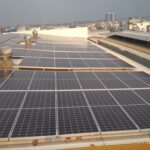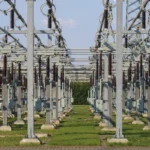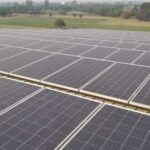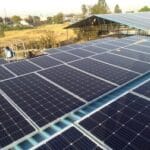Capex vs Opex Solar Model: Which is Better for Your Energy Needs?
Capex vs Opex Solar Model: Which is Better for Your Energy Needs?
Solar energy systems are becoming increasingly popular in homes and businesses around the world. With rising electricity costs, solar energy provides an attractive alternative to traditional energy sources.
With solar power now ~20% cheaper than grid electricity, the majority of commercial and industrial customers have expedited their plans to adopt on-site solar panels. Making the switch to solar also helps reduce carbon emissions and shows commitment to environmental responsibility goals.
One of the most important decisions when installing a solar system is determining what kind of pricing model best fits your needs: Capex or Opex. This article will discuss the pros and cons of each model and help you decide which is best for your solar energy system.
Overview of Capex and Opex Solar Energy Systems
In the context of solar energy systems, Capex (Capital Expenditure) and Opex (Operational Expenditure) refer to different types of payment models.
Capex Model
In a Capex Model, the cost of the solar energy system is paid upfront in a one-time fee.
- Ownership – The system is owned by the customer, so any energy produced by the system belongs to the customer.
- Maintenance – System installation and maintenance costs are covered in the upfront fee.
- Investment – It requires a large initial investment but has long-term savings potential as customers will not have to pay recurring energy bills.
Who Should Consider It?
This model can be more beneficial for those with the upfront capital to invest in their solar energy system.
If your business has the space to install a solar power plant and can make the upfront investment, explore a solar CapEx model.
Opex Model
In an Opex Model, customers pay a fixed monthly fee for the use of a solar energy system without having to purchase it outright.
- Ownership – The energy produced belongs to the purchaser, so no ownership is involved.
- Maintenance – The monthly fee covers installation and maintenance costs as well as energy payments for the energy produced by the system.
- Investment – Customers only pay for generated energy rather than investing in a large asset. The Opex model is less risky for the customer than the Capex model.
Who Should Consider It?
This model is more beneficial for those who do not have access to large amounts of capital but still want to take advantage of solar energy. The customer does not have to worry about long-term costs, as the monthly fee covers all expenses.
Factors to Consider When Choosing Between a Capex or Opex Model
1. Total investment capital available
If you can afford a higher upfront investment, you can consider the Capex Model and vice-versa.
2. Long-term savings potential
Capex Model offers the highest long-term savings potential as customers will not have to pay recurring energy bills. The Capex model also gives customers full ownership of the system, so any energy produced by the system belongs to them. On the other hand, Opex Model has a smaller upfront investment which may be attractive for those who don’t have access to large amounts of capital. However, customers do not own the system so any energy produced belongs to the purchaser and they will have to pay a fixed monthly fee for the use of their solar energy system.
3. Risk tolerance
The Capex Model has a higher risk factor due to the large upfront investment. The customer has to bear all costs upfront and there is no guarantee that they will get a return on their investment. On the other hand, the Opex Model has a low-risk factor since customers don’t have to pay an upfront cost and only have to pay for generated energy. This option is less risky for the customer and can be more attractive for those who don’t have access to large amounts of capital.
3. Maintenance requirements
The Opex Model removes the responsibility of maintaining the system from the customer. The monthly fee covers all maintenance and repairs, giving the customer peace of mind that their system is operating optimally.
4. System size
System size plays an important role in determining which model is best to use. If you are looking for large-scale energy production, the Capex model is more beneficial as costs will be spread out over time. On the other hand, if you are looking for a small to medium-sized system, the Opex model might be ideal as it eliminates large upfront investments.
5. Energy usage patterns and needs
When choosing between a Capex or Opex Model, it is important to consider your energy usage patterns and needs. If you have high energy consumption patterns and are looking for long-term savings potential, then the Capex Model may be the better option. On the other hand, if you have low energy consumption patterns and require flexibility in payment, then the Opex Model may be more beneficial.
6. Potential for future expansions or upgrades
When considering the potential for future expansions or upgrades, the Capex Model is more beneficial as it allows customers to easily incorporate new systems and technologies without incurring additional costs. The customer owns the system so any improvements can be made without having to incur any payments. On the other hand, with the Opex Model, customers are limited as they do not own the system. Any upgrades or expansions will require additional payments and may not be as cost-effective in the long run. It is important to consider how long you plan on using your solar energy system before deciding which model to choose.
7. Tax incentives or credits that may be available
Government incentives and credits can be beneficial when choosing between a Capex or Opex Model. Incentives like the Solar Investment Tax Credit (ITC) are available to customers who opt for the Capex Model and can reduce up to 26% of their total costs. Other financial incentives can be obtained from local governments that offer solar rebates or grants for those who choose the Capex Model. On the other hand, Opex Model customers may not be eligible for these incentives and credits as they don’t own the system. Understanding all available incentives can help customers make an informed decision when choosing between a Capex or Opex Model.
Which Model Is Better?
In the end, it all comes down to what fits best with your individual needs and budget. When deciding between a Capex or Opex model for your solar energy system, consider the pros and cons of each model to determine which is best for you.
It’s always good to consult with an experienced player in the solar energy industry to find the best recommendation for your specific purpose and needs.
Suggested Articles

Industrial Solar Plants with Diesel Generator Backup: What You Need to Know
Discover how industries can efficiently run rooftop solar plants alongside diesel generators (DG). Learn the benefits, setup tips, and hybrid system strategies to ensure uninterrupted power and maximize energy savings.

Haryana’s GEOA 2025: A Boost for Captive Solar Plants and Wind Energy Developers
Haryana’s GEOA 2025 paves the way for growth in captive wind and solar energy projects with investor-friendly reforms.

Best Solar Panels for Rooftop Projects: How to Choose the Right One
Selecting the right solar panel is crucial for rooftop project success. This guide explains how to evaluate panel types, efficiency, warranties, and performance to ensure maximum power output and long-term savings for your home or business.

Rajasthan Rooftop Solar Subsidy: What Homeowners Need to Know
Rajasthan homeowners can save big with the 2025 rooftop solar subsidy. Learn about the updated rates, eligibility criteria, and benefits to make your switch to solar more affordable.

How to Improve Energy Efficiency and Save Electricity Costs
Learn how energy conservation and efficiency can help you save electricity, cut costs, and make your home or business more sustainable

Complete Guide to Solar Panel Subsidy Scheme in Haryana
Solar power is not only less expensive, but it is also the most abundant source of clean energy.

Poor vs Good Solar Installation: Key Differences Explained
A solar system’s performance depends heavily on installation quality. This blog explains the clear differences between a poor and good solar installation — from wiring practices and panel alignment to mounting structures and system safety — helping you make an informed choice and ensure long-term efficiency.

India’s Renewable Energy Revolution: The Role of Agrivoltaics
Agrivoltaics, the integration of solar panels with agricultural land, is emerging as a key driver in India’s renewable energy revolution. This blog explains how agrivoltaics supports sustainable farming, increases land efficiency, and contributes to clean energy production, helping India meet its solar energy targets while boosting rural economies.